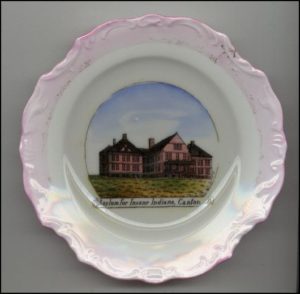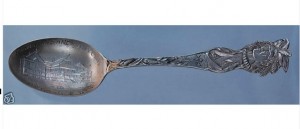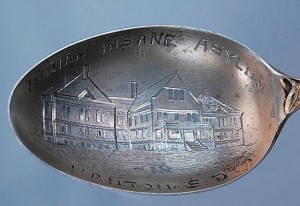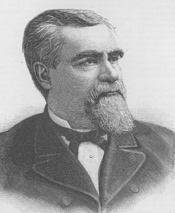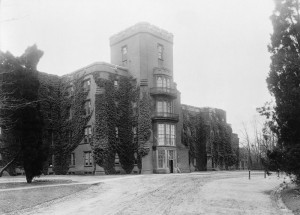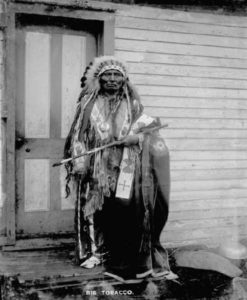In the 1800s and early 1900s, many insane asylums (as well as prisons and orphanages) were treated as tourist attractions. This practice had started long ago, when visitors to Bedlam in London, paid a penny to see the lunatics there. They were allowed to bring in sticks to poke the inmates with, to stir them up.
The situation was not so bad in America by the 19th century, but many people were curious about insane asylums and wanted to see inside. Some visitors were curious gawkers–the same kind of people who enjoyed freak shows at the circus–but many others were sincerely interested in seeing how patients were treated.
The pictures are of tourist items created for the Canton Asylum for Insane Indians.
